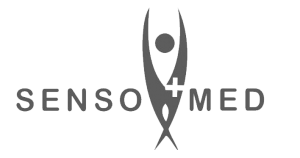| Article:What is a negatoscope? |
|---|
|
Lightmed negatoscopeis a device that produces light on a screen and provides the light required forx-ray and MB CT films. In this method, the light of the bright screen should be spread evenly on the surface of the screen. Because the presence of shadow and lack of uniformity of light can make the doctor’s diagnosis wrong. In the past, negatoscopes were made using fluorescent lamps (CCFL), which were not able to spread light evenly on the screen, and in the end, the doctor was not able to make a correct diagnosis. In order to distribute uniform light intensity in this type of negatoscopes, a large number of CCFL lamps should be used in the construction of the device. Another disadvantage of this method is the distance of 15 cm from the lamp, due to heat generation by the lamps and high energy consumption. The body of the device is hot and it will not be optimal in terms of energy consumption efficiency, and the device will have a large shape, which is architecturally The hotel systemof medical centers is considered a weakness. On the other hand, the life of the CCFL lamps used in these devices is relatively low and due to the high number of switching times (turning on and off) which is inevitable for the device, it does not have good resistance, and this lamp needs to be replaced in a short time. Also, from a technical point of view, controlling the light intensity in these negatoscopes has a relatively high cost (the cost of building variable voltage circuits). In newer generations of negatoscopes, LED is used to illuminate the screen, which has a longer life, lower consumption, and cheaper cost of controlling the light intensity than CCFL lamps. Advantages of LGPexposure system:The use of LED as a new emerging technology in the electrical and electronic industry has created a new horizon in the light industry. In summary, the use of LED has the following advantages over fluorescent technology and before:
Due to the use of semiconductor technology in the production of light, LED is capable of producing light by using less voltage and current. Therefore, the use of this technology will significantly reduce the consumption of electricity and in today’s era, when the increase in work efficiency And reducing energy consumption is one of the strategic factors in choosing goods and services, this is very important.
Since LEDbelongs to the family of semiconductors, simpler electronic circuits than fluorescent drive circuits can be used to easilycontrol the output light intensity of this element. This makes the simple control of this part with the lowest cost easily possible.
The ability to make LED on the SMD scale helps the user easily in using this element in the smallest spaces. This feature allows designers to build devices with high efficiency and small volume. Using the LGP optical system has the following advantages:
|
In summary, the features and specifications of LightMed Negatoscope LED Negatoscope can be described below.
- The use of SMD LED light source with controlled heat range, which allows us to have the highest quality of light with the lowest amount of energy consumption and heat loss.
- Using the Light guide plate (LGP)system, which makes the light spread completely evenly on the entire surface of the LightmedLED negatoscope.
- The use of a driver circuit (pwm) in the LED light-med negatoscope, which causes low consumption of the device and increases the life of the lamp, and allows the user of the LED light-med negatoscope to easily increase and decrease the light intensity.
- The use of programmable micro-controllers in the LEDLightMed Negatoscope, which adds features such as film detection sensor, light intensity memory, automatic device shutdown system when not in use, the ability to add remote control, etc.
- The very low thickness of LED LightMed negatoscope (10mm) which makes the appearance of the device very stylish, modern and suitable for today’s decoration of medical centers.
- The possibility of waterproofing the device against washing (IP:63)
- The resistance of the LightMedscreen to direct impact, which makes the device last and allows us to mark the film on the device.
- Low power consumption of LightMed LED Negatoscope and energy saving.













